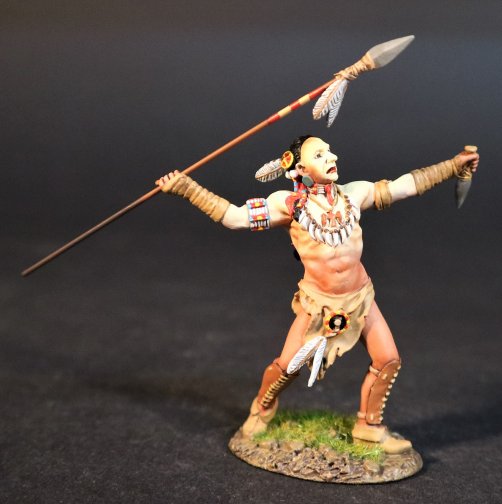- Joined
- Feb 2, 2011
- Messages
- 2,093
NEW RELEASES FOR NOVEMBER 2022
THE AGE OF ARTHUR
ANGLO SAXON/DANISH SHIELDWALL
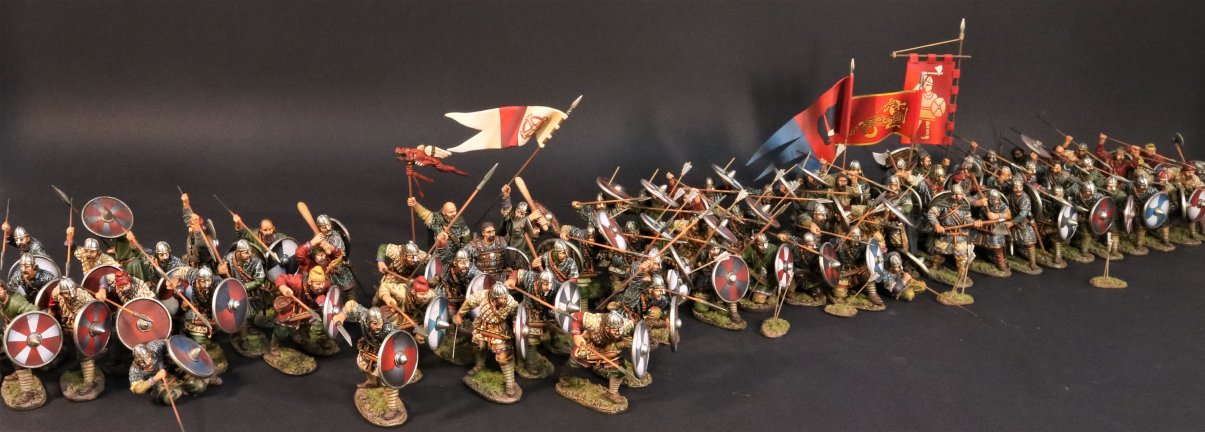
The death of King Edward the Confessor of England in January 1066 had triggered a succession struggle in which a variety of contenders from across north-western Europe fought for the English throne. These claimants included the King of Norway, Harald Hardrada.
The Battle of Stamford Bridge took place at the village of Stamford Bridge, East Riding of Yorkshire, in England on 25 September 1066, between an English army under King Harold Godwinson and an invading Norwegian force led by King Harald Hardrada and the English king's brother Tostig Godwinson. After a bloody battle, both Hardrada and Tostig along with most of the Norwegians were killed. The battle has traditionally been presented as symbolising the end of the Viking Age,
Harold's victory over the invading Viking army was short-lived. Three days after the battle at Stamford Bridge, on 28 September, a second invasion army led by William, Duke of Normandy, landed in Pevensey Bay, Sussex, on the south coast of England. Harold had to immediately turn his troops around and force-march them southwards to intercept the Norman army. Less than three weeks after Stamford Bridge, on 14 October 1066, the English army was decisively defeated and King Harold II fell in action at the Battle of Hastings, beginning the Norman conquest of England.
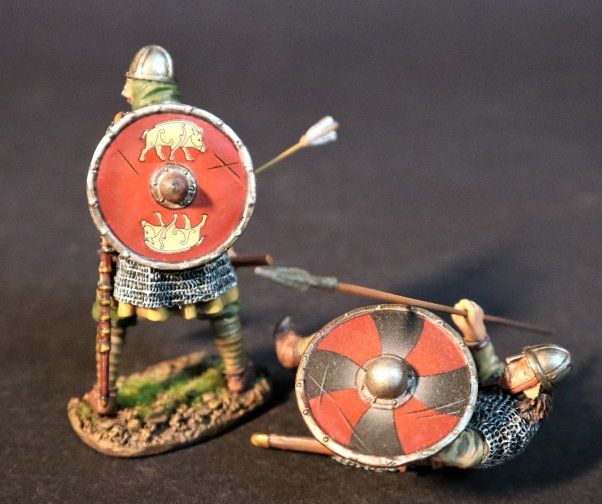
SX-63A
THE AGE OF ARTHUR,
ANGLO SAXON/ DANES.
2 WOUNDED SAXONS.
(3 pcs)
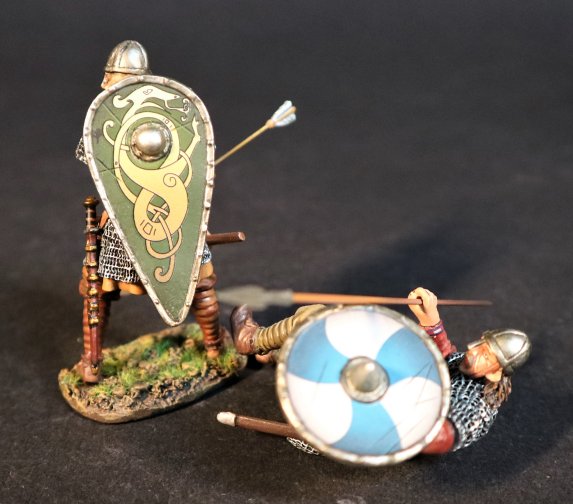
SX-63B
THE AGE OF ARTHUR,
ANGLO SAXON/ DANES.
2 WOUNDED SAXONS.
(3 pcs)
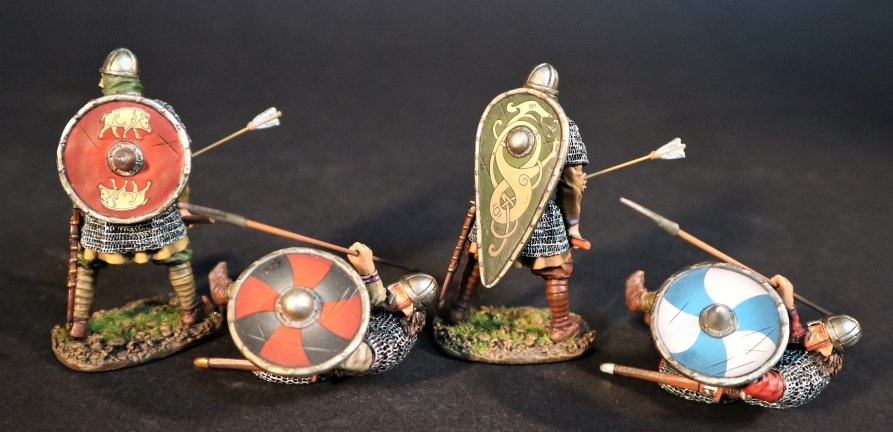
SX-63N
THE AGE OF ARTHUR,
ANGLO SAXON/ DANES.
4 WOUNDED SAXONS.
(6 pcs)
EL CID AND THE RECONQUISTA
THE SPANISH
The age in which El Cid lived has since been termed the “Reconquista”, or Christian reconquest of Spain from the Moors, and was one of the most colourful periods in military history.
The armies are spectacular and varied, ranging from the noble Christian Knights to the Muslim Andalusians, through to the religious zeal of the African invaders, the Almoravids and Almohads.
Although the period is often portrayed as a simple war of religion, it was in fact a great deal more complex, with Muslim commonly fighting Muslim, and Christian fighting Christians, with both sides using allies and mercenaries whenever it suited them.
This period, during the lifetime of El Cid 1040-1100AD saw the rise of heavy cavalry charges and other northern European influences, especially in the kingdoms of Aragon and Catalonia, which had the strongest links to France.
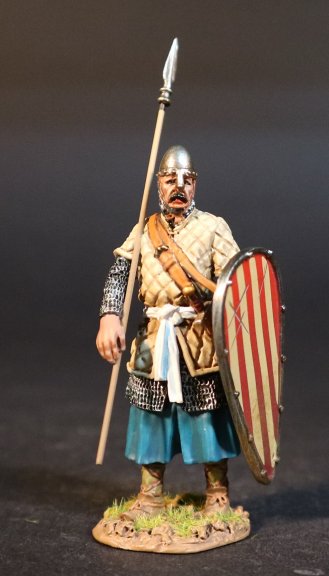
CID-20
THE CRUSADES,
EL CID AND THE RECONQUISTA,
SPANISH SPEARMAN.
(1 pc)
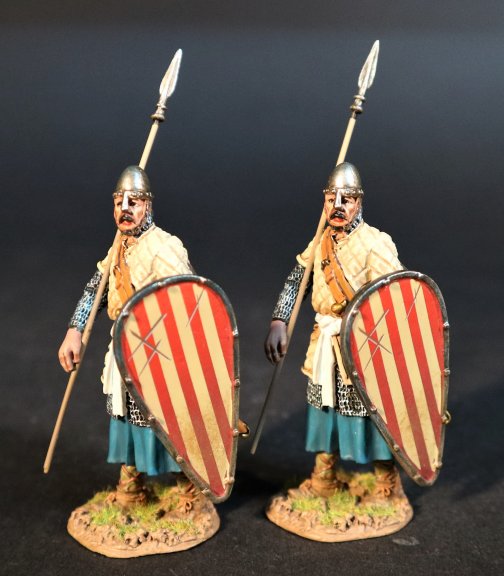
CID-20D
THE CRUSADES,
EL CID AND THE RECONQUISTA,
2 SPANISH SPEARMEN.
(2 pcs)
THE AGE OF ARTHUR
ANGLO SAXON/DANISH SHIELDWALL

The death of King Edward the Confessor of England in January 1066 had triggered a succession struggle in which a variety of contenders from across north-western Europe fought for the English throne. These claimants included the King of Norway, Harald Hardrada.
The Battle of Stamford Bridge took place at the village of Stamford Bridge, East Riding of Yorkshire, in England on 25 September 1066, between an English army under King Harold Godwinson and an invading Norwegian force led by King Harald Hardrada and the English king's brother Tostig Godwinson. After a bloody battle, both Hardrada and Tostig along with most of the Norwegians were killed. The battle has traditionally been presented as symbolising the end of the Viking Age,
Harold's victory over the invading Viking army was short-lived. Three days after the battle at Stamford Bridge, on 28 September, a second invasion army led by William, Duke of Normandy, landed in Pevensey Bay, Sussex, on the south coast of England. Harold had to immediately turn his troops around and force-march them southwards to intercept the Norman army. Less than three weeks after Stamford Bridge, on 14 October 1066, the English army was decisively defeated and King Harold II fell in action at the Battle of Hastings, beginning the Norman conquest of England.

SX-63A
THE AGE OF ARTHUR,
ANGLO SAXON/ DANES.
2 WOUNDED SAXONS.
(3 pcs)

SX-63B
THE AGE OF ARTHUR,
ANGLO SAXON/ DANES.
2 WOUNDED SAXONS.
(3 pcs)

SX-63N
THE AGE OF ARTHUR,
ANGLO SAXON/ DANES.
4 WOUNDED SAXONS.
(6 pcs)
EL CID AND THE RECONQUISTA
THE SPANISH
The age in which El Cid lived has since been termed the “Reconquista”, or Christian reconquest of Spain from the Moors, and was one of the most colourful periods in military history.
The armies are spectacular and varied, ranging from the noble Christian Knights to the Muslim Andalusians, through to the religious zeal of the African invaders, the Almoravids and Almohads.
Although the period is often portrayed as a simple war of religion, it was in fact a great deal more complex, with Muslim commonly fighting Muslim, and Christian fighting Christians, with both sides using allies and mercenaries whenever it suited them.
This period, during the lifetime of El Cid 1040-1100AD saw the rise of heavy cavalry charges and other northern European influences, especially in the kingdoms of Aragon and Catalonia, which had the strongest links to France.

CID-20
THE CRUSADES,
EL CID AND THE RECONQUISTA,
SPANISH SPEARMAN.
(1 pc)

CID-20D
THE CRUSADES,
EL CID AND THE RECONQUISTA,
2 SPANISH SPEARMEN.
(2 pcs)


